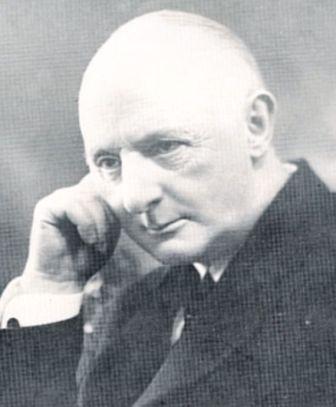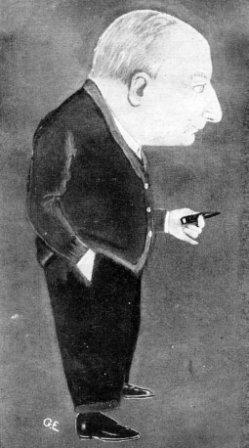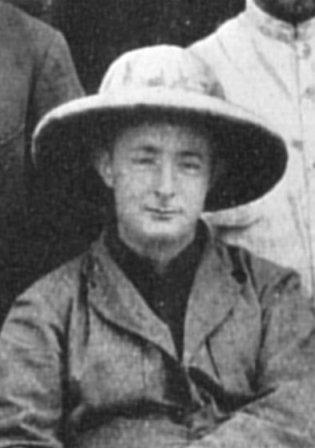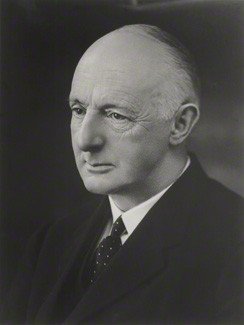Back to search results
Name: DELAMERE, Hugh Cholmondeley KCMG 3rd Baron, Lord





Birth Date: 28 Apr 1870 London
Death Date: 13 Nov 1931 Nairobi, angina
First Date: 1897
Last Date: 1931
Profession: Owned large areas of land, and was a progressive stock farmer and agriculturalist. He took a very prominent part in the political life of the country, and was an Unofficial Member of Legco for many years.
Area: Njoro, Elmenteita
Married: 1. 11 July 1899 Lady Florence Anne Cole b. 3 Feb 1878 London, d. 17 May 1914 Nairobi; 2. In Nairobi 28 May 1928 Lady Gwladys Helen Markham née Beckett (1897-1943)
Children: Thomas Pitt Hamilton (19 Aug 1900 Vale Royal, Cheshire- 13 Apr 1979 Soysambu)
Author: Red 31, North, Playne, Drumkey, Land, Elephant, EAHB 1906, AJ, Gazette, Medals, EAHB 1907, Mills, Leader14, Chandler, Rift Valley, Red Book 1912
Book Reference: Gillett, SE, HBEA, Cuckoo, Leys, Best, Ainsworth, Midday Sun, Over my Shoulder, KFA, Permanent Way, Golf, Debrett, Sorrenson, Joelson, Cranworth, Kenya Diary, Bovill, Tignor, Roosevelt, Mischief, Polnay, White Man, Land 1903, EAHB 1905, KAD, Red 25, Hut
War Service: Capt. 3rd Battn. Cheshire Regt. and Cheshire Yeo. Cav.
School: Eton
General Information:
SE - Lord Delamere - Njoro - Dec 1907 The story of his life is told in 'White Man's Country' by Elspeth Huxley. HBEA 1912 - President, EA Turf Club.
Leys - A great deal of anti Delamere bitterness in Leys' book.
Ainsworth - Ainsworth's first contact with Lord D. was inauspicious. D. was on his way back accompanied by Dr. Atkinson with some Somalis and camels, from his great 2 year expedition from Berbera. He arrived at Machakos - not surprisingly - in an old patched shooting-jacket, a helmet patched with scraps of hide, boots held together with strips of leather and wire, worn and frayed trousers and a thick red beard. Mrs Ainsworth reported to her husband, perhaps too audibly, that there was a terrible-looking tramp at the door! He was invited in to tea, and later Ainsworth walked with him to his camp a mile west of the Station, where he met Dr. Atkinson. The two travellers were invited to dinner, but begged to be excused through lack of kit. Later Ainsworth found that dead camels had been left in several of the camps they had used. He sent out men to burn or dispose of the carcases, and wrote to D. to say that he should have been more considerate of other people's comfort.
Midday Sun - 'A good deal has been written about D's political life and about his career as a pioneer but his character, I think, has remained an enigma. I can remember him only dimly: a short stocky figure in a big mushroom hat with long greyish hair (he was then in his 50s) and a beaky nose, clad in a mud- or grease-stained brown cardigan, glimpsed in Nakuru's single street. ....... Galbraith [Cole] wrote of his brother-in-law: 'I think he is the most brilliantly clever person I know, marvellously quick to understand things, but he shuts his mind to all things except those which have to do with the material side of life with the utmost determination.' This resolve left 'a sort of gap, a something rather hollow in his company. He's the sort of person to whom you would hesitate to express a thought that perhaps seemed a little far-fetched - not that he wouldn't understand it, he would, no one better, but he would dismiss it probably with ridicule. Hisa keen wit, his perception and an amazing faculty for, so to speak, detaching himself and never giving himself away, make him very strong in dealing with most people, and all sorts of material things ..... He won't be known but he likes to know others. It's rather like "take all and give nothing" with him.' A good prescription, perhaps, for the armour of a politician but not for the companionship of a spouse. ........... (more) ........ There were, I think, two Delameres. There was the dedicated farmer who in his early days lived sparsely and austerely, indifferent to comfort, seeking for company his Masai herdsman - he was a fluent speaker of their tongue - and for reading matter pamphlets about liver-fluke in sheep or white papers on government expenditure; and there was the roisterer renowned for his parties at Muthaiga Club or Torr's Hotel when champagne flowed and thick heads followed in the morning. His hospitality, when these festive moods took him, was unbounded. Rose Cartwright, who knew him well, told me that she used to avoid him when she met him in Nairobi. 'I knew I'd be swept into a party if I didn't,' she said 'and much as I enjoy parties now and then I don't want them all the time. But up-country he was quite different: generous and nothing was too much trouble if you were in a fix of some kind.'
Golf - He was so attracted by Muthaiga Golf Course that he took up golf with enthusiasm, and rapidly became appointed President. He was always recognisable at any distance due to his entourage, consisting of one boy carrying a box of cigars, another a box of balls, and third his field glasses, in addition to his caddie and fore-caddies. President of Muthaiga GC in 1930/31. President of Naivasha Sports Club in 1925. President of Njoro Golf Club from 1921-1931
Sorrenson - Lord Delamere was the first to apply for a concession in the Rift Valley but this was refused because of Masai rights. In June 1903 Eliot offered him 100,000 acres at Njoro.... Eliot offered him a right to purchase the whole area at 8d per acre if he spent ú500 on improvements within 5 years. The Foreign Office disagreed and offered 100,000 acres on 99 year lease, or a right to purchase 10,000 acres. Delamere chose the former. ........... In 1905 a Land Committee was set up by Sir Donald Stewart - Judge Cator, Judge Hamilton and the Crown Advocate, J.W. Barth together with Lord Delamere and Frank Watkins. Cator was posted to the High Court at Zanzibar before the committee began work and Lord Delamere became Chairman.
Kenya Diary - May 1903 - Nairobi - Called on Delamere and his wife; they are now living in huts on the south side of the Nairobi swamp, not far from Ainsworth's house. Delamere is still enthusiastic about the future of Kenya ......... I liked Lady Delamere - very lovely, graceful and charming, and quite out of place in this savage country .......
Polnay - 1931 - On the Sunday Lord Delamere came to lunch. He seemed as old as time; his manners were perfect. ........
White Man - Second (probably) white man to enter British Territory from the North in 1897, on his 5th trip to Africa - the other 4 were shooting trips in Somaliland. ........ arrived at Eldama Ravine in Nov. 1897, with Dr. Atkinson, and met James Martin, the Collector at Baringo ..... etc. etc. etc [the definitive biography - so far!!!] Land Grant - Agricultural, about 2000 acres - Kikuyu - May 6 - Freehold. Further Grant - 100,000 acres, grazing - Molo River - Aug 26 - Leasehold
KAD 1922 - Steward, Jockey Club of Kenya
Playne - Group photograph of the Colonists' Association of British East Africa - President
Playne - Lord Delamere - Soysambu Estate, on Lake Elmenteita - This estate is of 45000 acres, and is some 12 miles from Nakuru Station. Lord Delamere has lately acquired Colonel Harrison's land and residence, a fine stone house overlooking Lake Elmenteita. The farm is very beautiful, being surrounded by mountains and having the Lake on one side ......... a river runs through the estate, and so does the railway. There are 35 miles of fencing.
Drumkey - Cattle Brand - V1D - Elmenteita
Land - 1908 - Lord Delamere - Grazing, 6927.6 acres, Near Nakuru, 4-7-04, Registered 12-10-08
Land 1909 - The Rt. Hon. H.C. Baron Delamere - Agricultural and grazing, 3275 acres - Rift Valley - 20/2/07 - Leasehold for 99 years from 1/8/09 - Registered 2/2/10
Land - 1911 - Lord Delamere - Grazing and agricultural, 1127.5 acres - Naivasha - 4/6/08 - Leasehold for 99 years from 1/9/10 - Registered 21/8/11
Elephant - The late Lord Delamere, that stalwart of white settlement in Kenya, was, I believe, the first man to take really successful photographs of elephant, which he sought in Somaliland, Ethiopia, Kenya and Uganda. If he had followed his own inclinations he would probably have spent much more time on the trail, but he was driven by his sense of duty to devote himself more and more to establishing the lines of political and economic development in the Colony which is in no small measure a monument to his faith. He was the Rhodes of East Africa.
Agricultural Journal 1908 - Brands allotted and registered - Rt. Hon. Lord Delamere, Elmenteita - Naivasha V1D
Gazette - 4/11/1914 - Appt. - Intelligence Department - To be Lieutenant - The Right Honourable Lord Delamere
Gazette - 11/8/1915 - Appt. - Intelligance Department - Resignation - Lieut. The Right Hon. Lord Delamere
Medals - East African Intelligence Department - Second Lieutenant
Sir Alfred Pease - 'Delamere was a bad husband' (notation in his copy of 'White Man's Country') - "I knew Delamere's mother quite well - she was a fussy, affected small "swanky" lady and wrapped up in her peculiar son - she was Delamere's father's 2nd wife, whom she m. 1860 - she was the eldest dau. of Sir Geo. Hamilton Seymour ….. one of the curious things about D. was that he had the reputation of great wealth & could always raise a few thousand & would spend freely without having an income! He did the most expensive things on very small means. There is little in these volumes of Delamere's family life, his wives, his son or his friends in England or Kenya - perhaps there is very little which is pleasant to relate - he behaved badly to his first wife - Harwood who went with me to Abyssinia & had been also ornithologist with the Delamere & said it was dreadful I only was with Delamere in Somaliland in camp & he was all right there - & we had great fun - He stayed with me at Kilima Theki & we always got on well together & indeed I was a backer of his, against old Flannel Foot - & he was the sort of settler with sense courage and social standing who could & did stand up to Governors & Colonial Secretaries.
Mills - Lord Delamere was a short, stocky figure of quick wit and high intelligence who was commonly known as simply 'D'. Often seen attired in a stained cardigan, he was equally at home on his farm with his Masai, with whom he spoke their language fluently, or when throwing wild parties at the Muthaiga Club. He was renowned for starting each day listening to his favourite tune played on his gramophone, several times over, 'All Aboard for Margate'.
Rift Valley - Member of the Rift Valley Sports Club - Jan 1929 - Elected - 1909 - Lord Delamere
Red Book 1912 - Baron H.C. Delamere - Naivasha
Gazette - 3/12/1919 - Register of Voters - Rift Valley Area - Right Hon'ble Lord Delamere - Farmer - Elmenteita
Old Africa - 4-8-14 - Christine Nicholls - What brought Lord Delamere to Kenya?
Why would a young lord abandon his extensive estate in England and come to East Africa in 1899? Hugh Cholmondeley, educated at Eton, inherited the barony of Delamere and the Vale Royal estate in Cheshire when he was only seventeen, in 1887. Still an adolescent, with a violent temper, small and red-haired, he ran wild for a time, spending extravagantly. He left school and his crammer’s and took to hunting on his estate. English hunting was somewhat tame, however, compared with the hunting of wild animals in Africa recounted in the tales of derring-do so popular at the time. When Hugh was 21 he went to Somaliland to hunt, and became hooked. He returned there every year, on one occasion being mauled by a lion, an incident that left him with a permanent limp.
His African travels began to plant in Delamere’s mind the idea of settling on the continent. But where? He was rapidly running through his inheritance. His friend Dr Atkinson was persuaded by his worried mother to accompany him on another Somaliland trip (1897-8), and this time the caravan trekked southwards to Lake Rudolf, entering the East Africa Protectorate and reaching Marsabit. Further on, Delamere saw the Laikipia plateau and the Aberdares and the luscious land caught his imagination. The area was sparsely populated following successive famines and epidemics of both smallpox and rinderpest over the previous few years. It seemed wide open for development. For the moment, however, Delamere decided to go home to England to get married.
Africa beckoned again and Delamere decided to show the East Africa Protectorate to his wife, Lady Florence Cole, daughter of the Earl of Enniskillen. By now the railway had been built, so the couple travelled upcountry by train in 1899, collecting birds for the British Museum. Then they returned to England. Two years at Vale Royal was all that Delamere could stand, and he and Florence left for Africa again on 1902, leaving their baby son behind. The Governor of East Africa, Sir Charles Eliot, was keen to encourage white settlers, to help make the excessively expensive railway pay. A riding accident on the Athi plains laid Delamere on his back, encased in plaster of paris, for a year in Nairobi. Dr Atkinson was his doctor and, fired by Eliot’s zeal, was keen on farming in the area. Delamere arranged a present for him of a prize Shorthorn bull from the Vale Royal estate, and this animal fathered eighty calves in Kenya, the nucleus of the country’s grade herds. Delamere decided to invest in East Africa, but his income had dwindled to almost zero. He raised mortgages on Vale Royal until it passed into the hands of the receiver and he lost his English estate. This was not a popular move, and it was said that he ‘also placed numerous and quite valuable works of art belonging to the family estate, all of these items to be sold at public auction as listed in the “private catalogue” of Sotheby’s. It was during the period 1911-1930 that he broke up, disposed of and sold off … a very valuable library that had been built up over many years at Vale Royal Abbey, Cheshire, by his father, grandfather, plus previous ancestors of the Cholmondeley family. He did so without any consideration for the future of classical literature in England, which reflects his mental attitude toward education and culture; he was only interested in his own ambitions in Africa and to try and promote a white, European only, controlled empire of Kenya.’
Now Delamere was committed to Kenya. He borrowed so heavily from banks that his East African farm profits all went to pay interest. He was given a free grant of land in the Rift Valley, on the slopes of the Mau escarpment between Njoro and the Molo river, where he wanted to farm sheep and engage in dairying. He sent to Vale Royal for rams and ewes. Poor Florence lived on the farm in what can only be described as a grass hut, without a proper door or windows. After a while she was promoted to a wooden hut, with an uneven earth floor on which the furniture sent out from England stood at angles. She busied herself looking after pigs and poultry and ostriches. What a contrast with her life in Vale Royal. Next month we shall discover how she fared, wrested from her home country and put into what must have seemed to her to be very primitive living conditions.
Delamere’s sense of adventure and restlessness, combined with the coincidence of Kenya needing white settlers to pay for the railway, plus an enforced convalescence in Nairobi, all combined to make this young man throw over his English estates and possessions and invest everything in East Africa.
Back to search results





